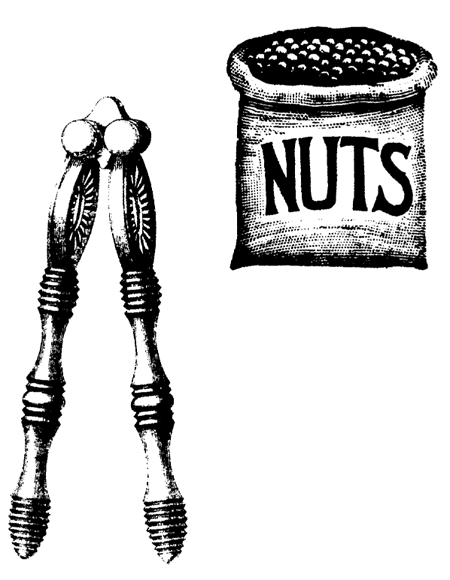New show coming soon on Showtime on how sex became a proper study of Science . How Virginia E. Johnson, a writer, researcher and sex therapist who with her longtime collaborator, William H. Masters, helped make the frank discussion of sex in postwar America possible if not downright acceptable, died on Wednesday in St. Louis at an assisted living center. She was 88

Masters and Johnson moved sex out of the bedroom and into the laboratory, where it could be observed, measured, recorded, quantified and compared.
Contrary to popular belief, there was absolutely no difference between a vaginal orgasm (the good kind, according to Freud) and a clitoral orgasm (the bad kind).
- The length of a man’s penis has no bearing on his ability to satisfy his partner.
- For elderly people, a group long considered sexually demure if not altogether chaste, vigorous sexual activity was not only possible but normal.
… Wow!
Directly from the desk of Dr. Bawdy – http://bawdylanguage.com/blog
In and around the locker room there’s little talk of breasts, but lots of conversation about tits.

A woman has bosoms, a bust, or a breast,
Those lily-white swellings that bulge ’neath her vest
They are towers of ivory, sheaves of new wheat,
In a moment of passion, ripe apples to eat.
You may speak of her nipples as small rings of fire
But by Rabelais’ beard, she’ll throw fifteen fits
If you speak of them roundly as good honest tits.
—“Ode to Those Four-Letter Words”
Read more – “Bawdy Language,” the Book

The device is said to draw its name from the mysterious Dr. Condom or Conton, a physician at the court of Charles II (c. 1660–1685) who allegedly created the item to help put a cap on His Majesty’s growing number of illegitimate children. Students of that period, though, have been unable to locate the good Doc- tor, and they’re not even sure he really existed.
Other theories regarding the origin of the word range from a Colonel Condum in the Royal Guard to Condom, a town in Ger- many recorded as a fortress of considerable strength, to an oilskin case that held the colors of the regiment (18th–early 19thC). Some think the word may even be a unique blend of cunnus (for the female pudenda) and “dum” or “dumb”—together rendering the organ incapable of functioning.
Another claim regarding the invention of the condom, and its first published description, was made by Gabriello Fallopio (1523–1562)—whose name is most closely associated with the Fallopian tubes—in De Morbo Gallico, published two years after his death, in which he encouraged use of linen sheets as condoms.
Letter Perfect
The condom achieved its greatest popularity during the seventeenth and eighteenth centuries, often appearing in print as c-d-m and frequently spoken of as a letter (French, Italian, or Spanish, the letter and envelope being virtually one), a form of correspondence which absolutely, positively, had to be there overnight.
Read more – “Bawdy Language,” the Book

M’lady’s privates consist of a number of parts. Those which are featured most prominently are the vulva1 (c. 1548, Latin for “wrapper”), and the vagina2 (c. 1682, Latin for “sheath”). However, the whole world knows them better collectively as the cunt.
Cunt is a grand old word, not underground, not slang. You’ll find variations of it in Old and Middle English, Middle Low and Low German, Old Norse, and Dutch. For years, it was believed that cunt derived from cunnus, the Latin word for the female genitals, but no one could explain how the t got into cunt. It was left for Eric Partridge to discover the word as related to the Old English cwithe, “womb,” finding the root of the matter in cwe, (or cu), which signifies “quintessential physical femininity”—a root that appears in a host of words from “cradle” and “cow” to “queen” and “cunning.”
Cunt has been taboo in writing and in speech since the fifteenth century. Between 1700 and 1959 it was considered obscene, and it was a legal offense to print it in full.
No ordinary four-letter word, cunt’s always been rather special. It’s a “sexual energizing word,” one which, according to Partridge, conveys “the sexual pleasure produced by a woman in a man and indeed all that woman-as-sex signifies to a man both physically and spiritually.”
It’s a cavern of joy you are thinking of now A warm, tender field just awaiting the plow.
It’s a quivering pigeon caressing your hand
Or that sweet little pussy that makes a man stand
Or perhaps it’s a flower, a grotto, a well, The hope of the world, or a velvety hell.
But friend, heed this warning, beware the affront
Of aping a Saxon: don’t call it a cunt.
—“Ode to Those Four-Letter Words”
Read more – “Bawdy Language,” the Book

The fart’s fine lineage not withstanding, other reference works have been more standoffish. The esteemed Oxford English Dictionary unequivocally declared fart “not fit for proper use.” Nobody knows why the OED chose to close down this innocuous form of personal expression or how the decision was made. One can only imagine a group of eminent scholars gathered in their ivory tower, deliberating upon the fate of words, having a beer or two, and shooting the breeze.
“Personally, I favor letting off some rectal steam.” “No, no! I much prefer an anal escape of wind.”
“Really gentlemen, it’s hard to top voiding wind from the bowels.” “All in favor of the fart…”
And so the fart fell from grace—expelled from polite society and relegated to second-class status. Farting around (c. 1900) came to signify purposelessness; anything overly pretentious was arty- farty.” Farting off (c.1968) made you inattentive and neglectful, leading to one blunder after another, causing you to fart away (c.1928) or squander your opportunities.
The Random House Dictionary of the English Language defined a fart as “an irritating or foolish person.” One in his dotage was written off as an old fart. Worthless items and activities were not worth a fart in a windstorm (both 20thC). And when your mind went blank and you did something incredibly dumb, or experienced an inexplicable aberration in your software program, you had a brainfart (c. 1983). “I normally remember my social security number, but I had a brainfart.”
Read more – “Bawdy Language,” the Book

We’re most nuts about our balls (10thC), the term by which we know them best. Balls have demonstrated exceptional versatility and service to the language. If you’re looking for courage, look no further. It takes balls to acquit yourself like a man, often balls the size of watermelons. Even Hemingway’s heroes required real cojones (Spanish for balls) in order to show grace under pressure. Ever so necessary, they’re unfortunately not always sufficient. As Fast Eddie Felson (Paul Newman) reminded Vince (Tom Cruise) in The Color of Money (1986): “You’ve got to have two things to win. You’ve got to have brains and you’ve got to have balls. You’ve got too much of one and not enough of the other.”
Newspapers seldom have balls in such matters. As part of a policy adopted in 1993–94, The San Francisco Chronicle sup- presses even the hints it formerly gave readers to “offensive” words (e.g. sh-t or a—hole), choosing now to either omit them altogether or use in their stead “cute” equivalents, such as “Spaldings” (a trade name for sports equipment) for balls.
The oldest English word for the testicles that we have on record is the beallucas (before 10thC). We later had the ballokes (c. 1382) or ballocks and the verb to ballock (19th–20thC), from which we got our “Ballocky Bill the Sailor”—a ballsy old salt if there ever was one. Time and his yearning for acceptability would mellow him into the children’s favorite, Barnacle Bill, with hardly a hint of his salacious character.
Part 1 Part 2
Read more – “Bawdy Language,” the Book

Truly ballsy but also somewhat bollixed or balled-up were the Skopts, a religious sect at the time of Catherine II and Alexander I, which initiated new members into the cult by searing their balls with a hot iron. For some unexplained reason, the sect died out— but their rites lived on, entering the language as our “baptism of fire.”
Balls have also served us well as an important interjection, part of our long-standing tradition of using the better half of the body to register emotion. They express surprise and exasperation (“Nuts!”) as well as incredulity and disappointment (“Nonsense!”).
“Baloney!” you say? As Partridge reminds us, that word comes not from the sausage but from the Gypsy pelone—for balls.
Functionally speaking, it would be difficult to imagine the sports world without balls. Absolutely critical to most of our games, they are governed by definite rules as to their use. It’s proper for men to play ball with balls provided by management, but it’s forbidden that they play with their own balls. And when a ball bounces up and hits the catcher in the balls, it is said to “ring his bell,” though the sound is that of a dull thud followed by a shrill cry.

Hedy Lamarr: “I’ll meet you in front of the pawn shop.”
Bob Hope: “Okay, Dottie, and then you can kiss me under the balls.”
—Sketch on The Pepsodent Radio Show.
(Hope’s line in the script was a simple “Okay.”)
Part 1 Part 2
Read more – “Bawdy Language,” the Book
Read more – http://bawdylanguage.com/sampler-Book-of-Toilette-Falling-Behind.php

S-H-I-T. It is probably the most popular word in the English language and responsible for some of our most expressive sentiments. We’ve a shit-load of expressions that capture perfectly the nature of the human condition. Add a simple exclamation point and what better way to register disgust, disappointment, or frustration? It can mean very little — nothing, or the least quality as “This ain’t worth shit.” or represent the very best, as in top quality street drugs: “This is some good shit
It’s everywhere. You’ll find it in the most exotic places — in your pants, alongside a shave, shower, shine, and shampoo, on a stick, and in a handbag (all 20thC). Most people are full of it; those who aren’t simply act shitty. We start the day telling others, “I feel like shit,” eliciting the remark, “You do seem flushed.” Dispassionate observers reinforce the sentiment, noting how you look like shit or like ten pounds of shit in a five pound bag (both 20thC). We pretend not to notice the resemblance.

When you speak of a movement, or sit on a seat,
Have a passage, or stool, or simple excrete;
Or say to the others, “I’m going out back,”
Then groan in pure joy in that smelly old shack.
You can go lay a cable, or do number two,
Or sit on the toidy and make a do-do,
But ladies and men who are socially fit,
Under no provocation will go take a shit!
— “Ode to Those Four-Letter Words”
Read more – “Bawdy Language,” the Book







